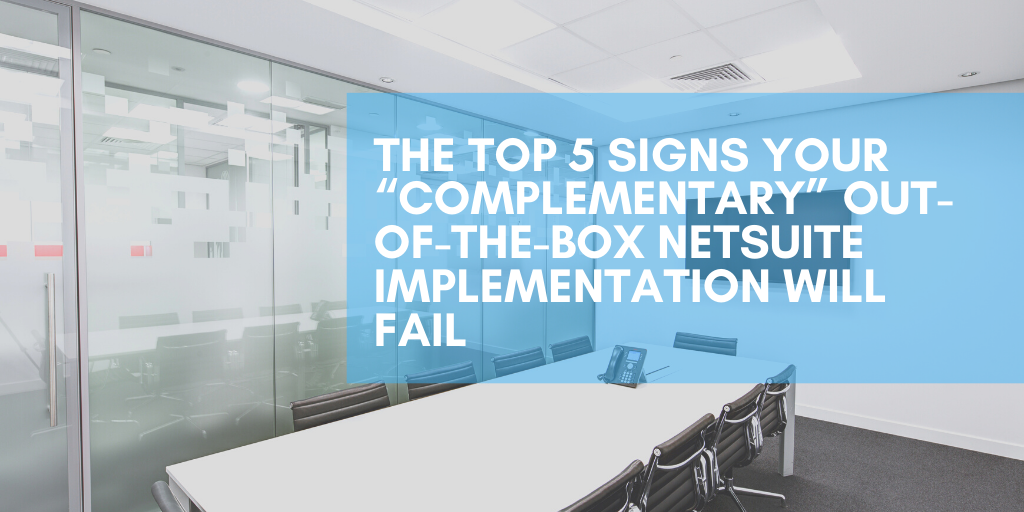Last Modified: February 2nd, 2022
2 min read

Out-of-the-box (i.e. Guided or DIY) implementation services may promise free, easy, manageable, and quick implementation, but oftentimes, these solutions fail. What is thought to be the easy way to implement NetSuite may do more harm than good to the company. There is really no one-size-fits-all solution for NetSuite implementation as with other types of implementation. Note that NetSuite is super broad and deep.
Here are the signs your NetSuite Out-of-the-Box implementation needs help:
1. No clear project visibility
Clear project visibility means having a clear picture of every aspect of implementation. This includes how the project is performing, the allocation of resources, and the determination of potential risks. However, with an out-of-the-box solution, project management will tend to only depend on rigid pre-built implementation templates. The project phases are always assumed by predetermined factors, not thinking that actual project scenarios are still different. What is actually seen is different from what is projected. This rests under the consideration that the project is simple and the solution will be smart enough to solve it.
2. Taking a number of tests to complete
A popular out-of-the-box program for laying the foundation of NetSuite is SuiteSuccess. In guiding smaller businesses, the solution takes its life from best practices of a thousand NetSuite implementations. The idea is to make NetSuite easy to implement relying on its four key pillars of success otherwise SuiteSuccess implementation cycle: build, engage, consume and optimize. But the problem arises when implementation gets stuck at the engagement stage or when NetSuite tries to configure and customize the software uniquely to your business. And because the solution is innately faulted and vulnerable, more hours will be required on beta-testing.
3. Running behind the project timeline
An out-of-the-box solution’s failure to prepare for project contingencies will not only delay progress in each particular sprint but will also cause the entire implementation process to lag down.
4. Having more people involved
A delayed implementation will likely force project managers to pour in more resources to help speed up the process of catching up with the deployment target dates. Having initially relied on the efficacy of an out-of-the-box implementation to lessen the manpower involved, project managers will end up bringing an army of consultants and developers.
5. Incurring unexpected costs
All the above fail points will lead the implementation to a point where it ought to avoid- having cost overruns. Having no clear project visibility leads to poor budget planning; more time spent on project tests affects the integrity of the entire implementation; running behind project timeline means compromising functions critical to your business operations; and having more resources employed only leads to incurring unexpected project costs.
But it’s not always too late as many service providers offer NetSuite project recovery for implementations needing immediate help. Excelym offers a three-phased approach: problem assessment, actual implementation recovery, and lastly, offering enhanced training and support.
Kate is a Managing Partner, and also the head of Functional Services.
Published on: October 31, 2019

Awesome post! Keep up the great work! 🙂